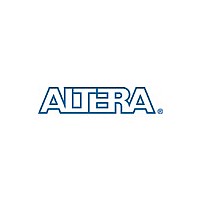EPC1 Altera Corporation, EPC1 Datasheet - Page 28

EPC1
Manufacturer Part Number
EPC1
Description
Configuration EPROMs For Flex Devices
Manufacturer
Altera Corporation
Datasheet
1.EPC1.pdf
(36 pages)
Available stocks
Company
Part Number
Manufacturer
Quantity
Price
Company:
Part Number:
EPC1.0-24P-FPC(52207-2485)
Manufacturer:
RFMD
Quantity:
5 000
Company:
Part Number:
EPC1064C8
Manufacturer:
ALPHA
Quantity:
5 510
Part Number:
EPC1064LC20
Manufacturer:
ALTERA/阿尔特拉
Quantity:
20 000
Part Number:
EPC1064LC20H
Manufacturer:
ALTERA
Quantity:
20 000
Part Number:
EPC1064LI20
Manufacturer:
ALTERA
Quantity:
20 000
Configuration Devices for SRAM-based LUT Devices Data Sheet
IEEE Std.
1149.1 (JTAG)
Boundary-Scan
Testing
28
SAMPLE/PRELOAD
EXTEST
BYPASS
IDCODE
USERCODE
ISP Instructions
INIT_CONF
Table 10. EPC2 JTAG Instructions
JTAG Instruction
f
f
Allows a snapshot of a signal at the device pins to be captured and examined during
normal device operation, and permits an initial data pattern output at the device pins.
Allows the external circuitry and board-level interconnections to be tested by forcing a
test pattern at the output pins and capturing results at the input pins.
Places the 1-bit bypass register between the TDI and TDO pins, which allows the BST
data to pass synchronously through a selected device to adjacent devices during
normal device operation.
Selects the device IDCODE register and places it between TDI and TDO, allowing the
device IDCODE to be serially shifted out of TDO. The device IDCODE for the EPC2
configuration device is shown below:
0000 0001000000000010 00001101110 1
Selects the USERCODE register and places it between TDI and TDO, allowing the
USERCODE to be serially shifted out of TDO. The 32-bit USERCODE is a
programmable user-defined pattern.
These instructions are used when programming an EPC2 device via JTAG ports with
a MasterBlaster, ByteBlaster MV, ByteBlaster, or BitBlaster download cable, or using
a Jam STAPL File (.jam), Jam STAPL Byte-Code File (.jbc), or SVF File via an
embedded processor.
This function allows the user to initiate the APEX or FLEX configuration process by
tying nINIT_CONF to the APEX or FLEX device(s) nCONFIG pin(s). After this
instruction is updated, the nINIT_CONF pin is driven low. When the Initiate
Configuration instruction is cleared, nINIT_CONF is released, which starts the APEX
or FLEX device configuration. This instruction is used by the MAX+PLUS II software,
Jam STAPL Files, and JBC Files.
The EPC2 provides JTAG BST circuitry that complies with the IEEE Std.
1149.1-1990 specification. JTAG boundary-scan testing can be performed
before or after configuration, but not during configuration. The EPC2
device supports the JTAG instructions shown in
The ISP circuitry in EPC2, EPC4, EPC8, and EPC16 devices is compatible
with tools that support the IEEE Std. 1532. The IEEE Std. 1532 is a standard
developed to allow concurrent ISP between multiple PLD vendors.
For EPC4, EPC8, and EPC16 JTAG instruction, refer to the
Configuration Devices (EPC4, EPC8, & EPC16) Data
For more information, see
Boundary-Scan Testing in Altera
Figure 10
shows the timing requirements for the JTAG signals.
Application Note 39 (IEEE 1149.1 (JTAG)
Description
Devices).
Table
Sheet.
10.
Altera Corporation
Enhanced












